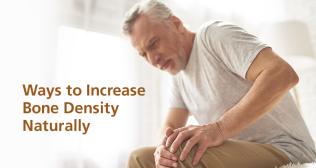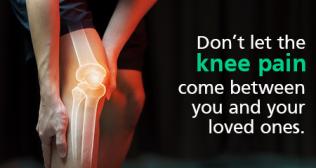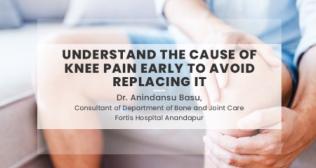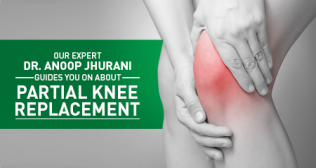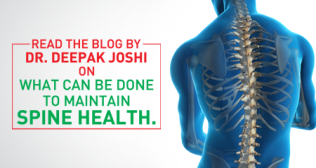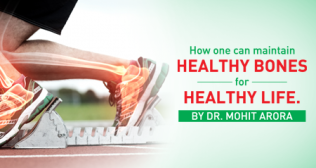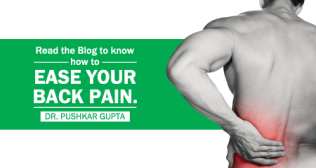
Bursitis: Causes, Types, Prevention, and Treatment Options
Bursitis is a painful condition that affects thousands of people each year, especially those engaged in repetitive physical activity or prolonged pressure on joints. It’s one of the lesser-discussed joint issues but can significantly affect mobility and quality of life. The condition arises when bursae; small, fluid-filled sacs that cushion the bones, tendons, and muscles around your joints; become inflamed.
We aim to understand bursitis by exploring its causes, different types, bursitis symptoms, available bursitis treatment options, and most importantly, how to prevent it.’
Whether you’re an athlete, a working professional, or simply experiencing joint discomfort, understanding what is bursitis can help you take proactive steps toward relief and recovery.
What Is Bursitis?
To fully understand what is bursitis, you need to know about the bursa. Bursae are small, jelly-like sacs located throughout your body; near joints such as the shoulder, elbow, hip, and knee. They act as cushions between bones and soft tissues, reducing friction and enabling smooth movement.
Bursitis occurs when one or more of these sacs become inflamed, usually due to repetitive motion, prolonged pressure, or injury. The condition can range from mildly irritating to severely painful, and while it is most common in adults over 40, anyone can develop it.
Bursitis is typically acute (short-term) but can become chronic if the underlying causes are not addressed.
Common Causes of Bursitis
There are multiple factors that can lead to bursitis. Understanding these causes is key to both prevention and effective treatment.
1. Repetitive Motion
Constant movement or overuse of a joint is a leading cause. Athletes, construction workers, and musicians are particularly susceptible.
2. Prolonged Pressure
Sitting or kneeling on hard surfaces for extended periods can lead to inflammation. For example, students or cleaners who kneel frequently are at risk for knee bursitis.
3. Trauma or Injury
A sudden impact or fall can damage a bursa sac, triggering inflammation and pain.
4. Infection
Septic bursitis is caused by bacterial infection, usually from a cut or puncture near a joint. This form requires immediate medical attention.
5. Underlying Conditions
Certain health issues like rheumatoid arthritis, gout, and diabetes can increase your risk of developing bursitis.
Types of Bursitis
There are several types of bursitis, depending on the location of the inflamed bursa. The most commonly affected areas include:
1. Shoulder Bursitis
Occurs when the bursa in the shoulder becomes inflamed, often due to overhead activity or shoulder impingement.
2. Elbow Bursitis
Also known as olecranon bursitis, this type is common among people who lean on their elbows frequently or suffer trauma.
3. Hip Bursitis
Trochanteric bursitis affects the outer part of the hip and is common in runners or people who sit for long periods.
4. Knee Bursitis
Prepatellar bursitis is often called “housemaid’s knee” and occurs due to prolonged kneeling or direct impact to the kneecap.
5. Heel and Ankle Bursitis
Achilles tendon bursitis or retrocalcaneal bursitis can affect athletes, especially runners or those who wear tight footwear.
6. Septic Bursitis
Caused by infection, this is less common but more dangerous. It can occur in any part of the body where a bursa becomes infected with bacteria.
Each type of bursitis presents slightly differently, but they all share the core symptom of joint pain and inflammation.
Bursitis Symptoms
Identifying bursitis symptoms early can lead to quicker treatment and better outcomes. While symptoms vary depending on the affected area, some common signs include:
- Localized pain or tenderness
- Swelling and redness around the joint
- Limited range of motion
- A feeling of warmth in the joint
- Pain that worsens with movement or pressure
- In cases of septic bursitis, you may also experience fever, chills, and general malaise
Because the symptoms can resemble other joint issues, such as arthritis or tendinitis, it’s important to get a proper diagnosis from a healthcare professional.
How Is Bursitis Diagnosed?
Medical professionals typically diagnose bursitis through:
- Physical examination of the affected joint
- Medical history review to identify risk factors
- Imaging tests like X-rays, MRIs, or ultrasounds to rule out other conditions
- Aspiration of bursal fluid in case of suspected infection
Accurate diagnosis is essential before beginning any bursitis treatment, especially to distinguish between non-infectious and septic forms.
Bursitis Treatment Options
Once diagnosed, bursitis treatment depends on the severity, cause, and type of the condition. In most cases, it responds well to conservative measures.
1. Rest and Activity Modification
Reducing or eliminating the movement that caused the inflammation is the first step. This may involve taking breaks, changing positions, or using assistive devices.
2. Ice Therapy
Applying ice packs for 15-20 minutes several times a day helps reduce swelling and pain.
3. Medications
Over-the-counter NSAIDs (like ibuprofen or naproxen) relieve pain and inflammation. For severe pain, a doctor may prescribe corticosteroid injections.
4. Physical Therapy
Stretching and strengthening exercises help restore joint mobility and prevent recurrence. Therapists may also teach posture and movement techniques.
5. Aspiration
In more advanced cases, a doctor may drain the excess fluid from the inflamed bursa to relieve pressure and confirm infection.
6. Antibiotics (For Septic Bursitis)
If the bursitis is due to infection, antibiotic therapy is required, either orally or through IV depending on severity.
7. Surgery (Rare)
Surgical removal of the bursa is rarely needed but may be considered if the condition is chronic and unresponsive to other treatments.
Early intervention typically leads to a full recovery within a few weeks, though chronic or untreated bursitis may require longer management.
Prevention Strategies for Bursitis
Preventing bursitis often comes down to reducing strain and protecting your joints. Here are some actionable tips:
- Use proper body mechanics: Lift with your legs, not your back, and avoid repetitive motion whenever possible.
- Take regular breaks: Especially if your work involves repetitive movements or pressure on joints.
- Use padding: Knee pads or cushioned mats can protect joints during activities like gardening, cleaning, or construction.
- Maintain a healthy weight: Excess weight puts more pressure on your joints.
- Warm up before activity: Stretching before exercise improves flexibility and reduces risk.
- Wear supportive footwear: Proper shoes prevent pressure on ankles and knees.
- Treat underlying conditions: Manage diabetes, arthritis, or gout under medical supervision to minimize your risk.
Small adjustments in daily routine can significantly reduce your chances of developing bursitis or experiencing recurrence.
When to See a Doctor
If you notice persistent joint pain, swelling, or difficulty moving a joint; even if it seems minor; it’s wise to consult a healthcare provider. You should seek immediate attention if:
- Pain worsens despite rest
- Swelling is increasing
- You have a fever or chills (signs of infection)
- Redness spreads around the joint
- You suspect a recent injury may have triggered it
Ignoring bursitis can result in more serious complications like chronic inflammation, joint stiffness, or infection.
Final Thoughts
Bursitis may not be as well-known as arthritis or tendonitis, but it can be equally debilitating when left untreated. Understanding what is bursitis, recognizing bursitis symptoms, and being aware of the types of bursitis can empower you to act early and prevent long-term joint damage.
Fortunately, most cases are highly treatable with conservative care. If you adopt preventive measures and seek appropriate bursitis treatment, you can expect a full recovery and a return to normal activity.
Remember, joint pain is never “just part of aging” or something to ignore. Listen to your body, protect your joints, and don’t hesitate to seek help when needed.







